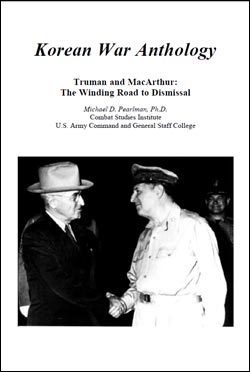
The Winding Road to Dismissal
By Michael D. Pearlman
22 Pages
Published: 2004
Like most people, Harry Truman was subject to conflicting interests and impulses. He believed in strong executive leadership under the aegis of combative presidents, such as his life-long hero, Andrew Jackson. (He once told Dean Acheson, his secretary of state, he liked “being a nose buster and an ass kicker much better” than a statesman.) On the other hand, Truman was too nice to be the man he dreamed of being, except in those rare moments when his temper took total control. Usually, he avoided personal confrontation, being a considerate, rather modest individual. Personality aside, Truman served his Washington apprenticeship in the inner circle of Capitol Hill, where the upper house functions by compromise and conciliation. Whatever his ideals of heroic manliness, Truman enjoyed his reputation as “the nicest man in the Senate,” the place he would spend “the happiest time of my life.”
Download the PDF 